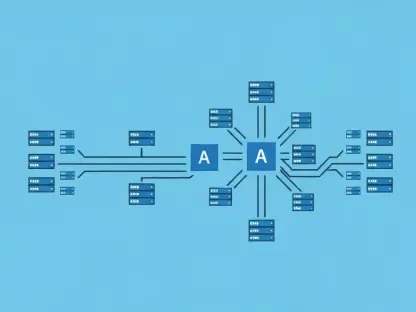West Virginia University (WVU) geoscience and engineering students are set to benefit significantly from Rock Flow Dynamics’ $26.8 million in-kind contribution. This substantial gift includes advanced professional software that promises to enhance students’ learning experiences and research capabilities. The donation specifically grants access to tNavigator, a highly sophisticated reservoir modeling and simulation platform. These licenses have been largely allocated to the Benjamin M. Statler College of Engineering and Mineral Resources at WVU, with additional licenses granted to the Eberly College of Arts and Sciences. Professor Samuel Ameri, chair of the Department of Petroleum and Natural Gas Engineering, underscored the importance of this gift, emphasizing that it provides critical industry tools essential for student education, research, and career readiness. The partnership aims to fortify the university’s petroleum and natural gas engineering program, ensuring that graduates are prepared to lead and innovate in the energy sector.
Strengthening Education and Research
As part of the collaboration, Rock Flow Dynamics sent personnel to conduct a two-day training session on the WVU campus, demonstrating the functionality of the new software and ensuring that faculty and students could leverage its full potential. This visit illustrated the company’s dedication to fostering strategic relationships with leading geoscience and petroleum engineering institutions around the world. According to Tim Pawlik, Rock Flow Dynamics’ director of sales in the USA, WVU’s regional leadership in energy and resource management was a pivotal reason for establishing the partnership. The effort aims to support the cultivation of future leaders in the oil and gas sector, reinforcing the program’s national and regional influence.
Furthermore, the Department of Geology and Geography within the Eberly College of Arts and Sciences will utilize the remaining licenses for courses in earth and environmental sciences and geology. Brent McCusker, chair of the Department of Geology and Geography, emphasized the value of practical, real-world applications for students. He noted that hands-on experience with industry-standard software not only deepens student understanding but also significantly enhances their employment prospects upon graduation. Through this extensive incorporation of cutting-edge technology into the curriculum, both departments aim to elevate the educational standards and research outcomes of their programs.
Industry-Academia Collaboration
The $26.8 million software donation was facilitated through the WVU Foundation, which manages private donations to the university. This collaboration is a testament to the potential of combined efforts between academia and industry to promote educational advancement and foster innovative research. The introduction of tNavigator to WVU’s curriculum not only bolsters the academic rigor of the programs but also aligns with industry demands, ensuring that students are well-equipped with the knowledge and skills necessary to excel in dynamic and competitive fields.
This initiative also highlights the broader trend of academic institutions seeking to forge strong connections with industry leaders to stay at the forefront of technological advancements. By integrating such high-caliber resources into their educational framework, institutions like WVU can provide their students with unique learning opportunities that bridge the gap between theoretical knowledge and practical application. This approach not only prepares students for immediate job market challenges but also positions them as innovators capable of driving future technological progress in their respective fields.
Future Implications and Benefits
Looking ahead, the implications of this collaboration are substantial. Access to tNavigator equips WVU students with a competitive edge, allowing them to engage with complex simulations and models that mirror industry practices. This experience is particularly beneficial for those entering the energy sector, where proficiency with advanced software tools is increasingly becoming a prerequisite. The initiative also enhances the university’s ability to attract top-tier talent, both in terms of student admissions and faculty recruitment, as the program’s facilities and resources reflect industry standards.
Moreover, the strategic partnership between WVU and Rock Flow Dynamics underscores the importance of sustained collaboration between educational institutions and industry partners. Such collaborations are vital for driving technological innovation and ensuring that the next generation of professionals is prepared to tackle contemporary challenges. The introduction of industry-standard tools into academic curricula serves as a significant step toward this goal, promoting a culture of continuous learning and adaptation that is essential for long-term success.
Conclusion
West Virginia University (WVU) geoscience and engineering students are set to benefit greatly from Rock Flow Dynamics’ generous $26.8 million in-kind contribution. This substantial donation includes state-of-the-art professional software that will significantly enhance the learning experiences and research capabilities of students. The software donation provides access to tNavigator, an advanced reservoir modeling and simulation platform that offers sophisticated tools for detailed analysis. The majority of these licenses will go to students in the Benjamin M. Statler College of Engineering and Mineral Resources at WVU, with additional licenses awarded to the Eberly College of Arts and Sciences. Professor Samuel Ameri, chair of the Department of Petroleum and Natural Gas Engineering, emphasized the importance of the contribution, noting that the donation includes pivotal industry tools that are essential for student education, research, and career preparedness. This partnership aims to strengthen the university’s petroleum and natural gas engineering program, ensuring that WVU graduates are well-equipped to innovate and lead in the energy sector.









